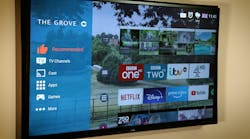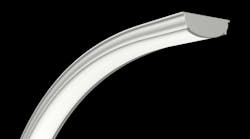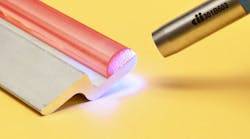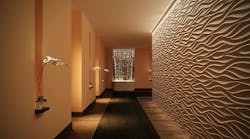Date Announced: 12 Jul 2010 While flip chip assembly of LEDs provides performance advantages in terms of better heat sinking and superior light extraction, the traditional flip chip process with solder or gold bumps also introduces additional cost due to extra processing steps. This case study will show how SunRay Scientific ZTACH™ adhesives enable LED packagers to realize the benefits of a flip chip configuration without realizing additional costs.In a traditional flip chip process, the pads on the chip may need to have appropriate under bump metallization (UBM). Secondly, bumps need to be deposited either by plating or by stud bumping. Next, the bumped chip needs to be aligned to the substrate, followed by a high temperature process (reflow or bonding) to form a continuous contact between the chip and the substrate. Finally, an underfill polymer needs to be dispensed in between the bumps to minimize the thermal expansion mismatch between the bumps, chip and the substrate. Thus, four steps have been added which require significant investment in capital equipment. This adds significant cost to a flip chip LED.In contrast, the self-assembling nature of the SunRay Scientific anisotropic conductive paste, ZTACH™, enables LED packagers to eliminate the extra steps and avoid the extra investment associated with the traditional solder/gold bump flip chip process. In a flip chip process with ZTACH™, the LED packager first applies the ZTACH™ paste on the heat sink, places the chip on the sink and performs coarse alignment. Note that bumping and adhesive patterning processes are not required. The ZTACH™ paste is comprised of a polymer filled with conductive, magnetic particles. Next, the entire assembly is cured in a magnetic oven. The magnetic curing results in the formation of columns which have high electrical conductivity in the Z-axis (ρ < 7 mΩcm), while maintaining electrical insulation in the X-Y plane. The self assembly nature of ZTACH™, with columns separated by as small as 12 microns, eliminates the need for additional patterning for individual I/O bonding pads. While the magnetic particles form columns, the polymer in between the columns acts as the underfill. This eliminates the need for a separate underfill process. In total, the flip chip process with ZTACH™ eliminates under bump metallization, bumping, adhesive patterning and underfill processes. Thus, ZTACH™ enables LED packagers to realize the benefits of flip chip packaging of HBLED’s without incurring significant costs in terms of reduced throughput and increased capital investment. Samples of ZTACH™ anisotropic conductive adhesives are available from SunRay Scientific. About SunRay Scientific: SunRay Scientific (SRS) is a supplier of advanced materials for printed electronics manufacturing and lead free packaging. The company’s key focus is the advancement of green electronics with clean chemistry, which includes development of conductive inks, epoxies and anisotropic conductive adhesives that minimize waste, eliminate use of lead, and reduce carbon footprint in electronics manufacturing.
Contact
SunRay Scientific 100 Technology Way, Mt. Laurel, NJ 08054
E-mail:[email protected]






